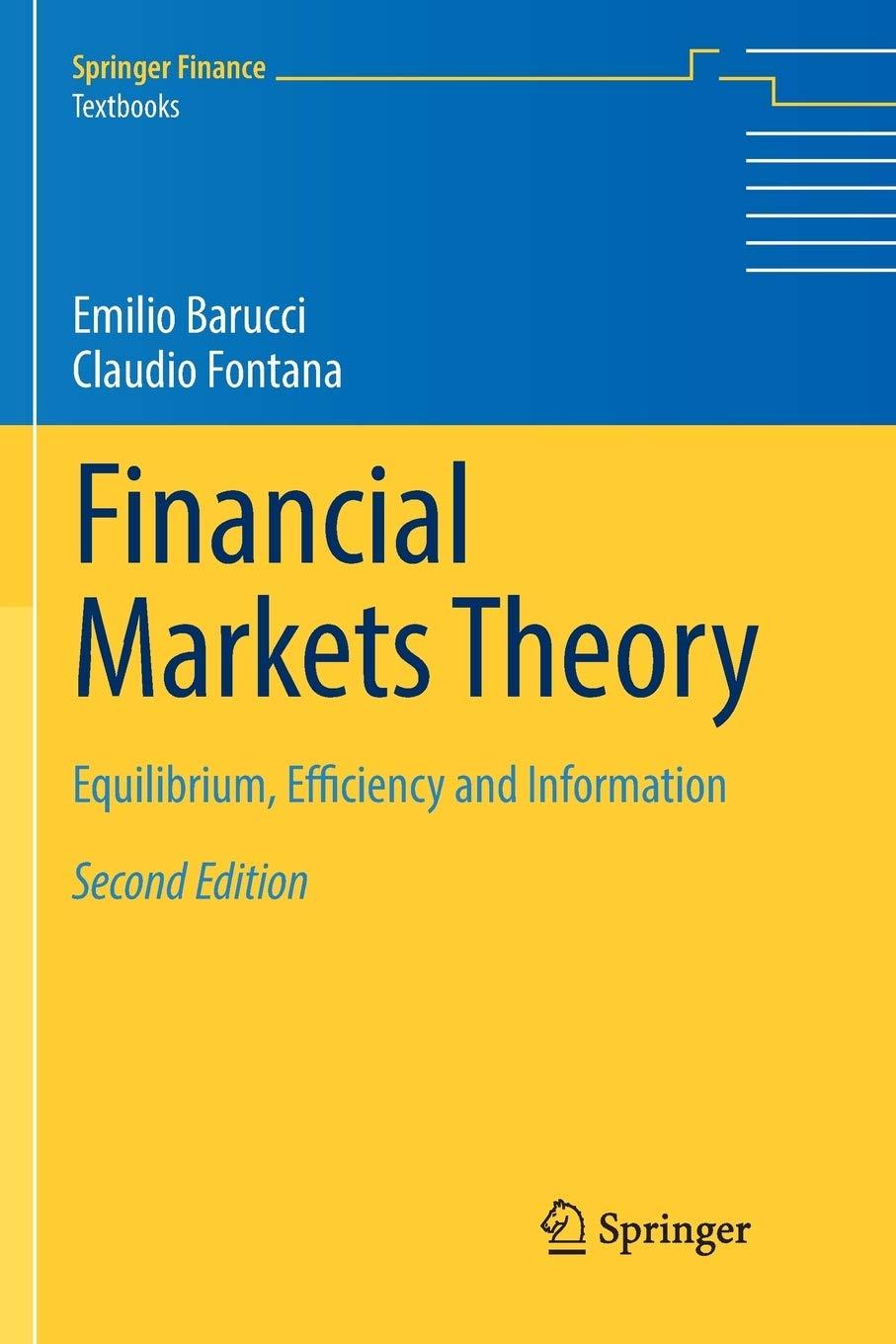Consider an economy with (S=N=3), with the following dividend matrix: [D=left[begin{array}{lll}1 & 4 & 3 6 &
Question:
Consider an economy with \(S=N=3\), with the following dividend matrix:
\[D=\left[\begin{array}{lll}1 & 4 & 3 \\6 & 2 & 4 \\2 & 3 & 5\end{array}\right]\]
(i) Show that the market is complete.
(ii) Given the price vector \(p^{\top}=(2.15,2.7,3.35)\), determine the state price vector.
(iii) Determine the risk free rate of return \(r_{f}\) implicit in the couple \((p, D)\) and the portfolio which attains the riskless payoff \((1,1,1)\). Verify that the return of such a portfolio coincides with \(r_{f}\).
(iv) Determine the portfolio \(z^{c}\) which replicates the payoff \(c=(2,3,6)\). Verify that \(p^{\top} z^{c}=Q(c)=m^{\top} c\).
(v) Determine the portfolio \(z^{\mathbf{1}_{3}}\) which replicates the Arrow security \(\mathbf{1}_{3}\), with payoff \((0,0,1)\), and verify that \(p^{\top} z^{1_{3}}=m_{3}\).
Step by Step Answer:

Financial Markets Theory Equilibrium Efficiency And Information
ISBN: 9781447174042
2nd Edition
Authors: Emilio Barucci, Claudio Fontana





